Disclosure: This article contains affiliate links. We may earn a commission from purchases at no extra cost to you, which helps our travel content.
Standing in the heart of Seoul's Bukchon Hanok Village, I found myself caught in a perfect time warp. To my left, a 600-year-old traditional Korean home with its distinctive curved roof tiles; to my right, the gleaming glass towers of modern Seoul piercing the autumn sky. This juxtaposition isn't just visually striking—it's the perfect metaphor for contemporary South Korean culture. As someone who spends his days translating complex scientific concepts into digestible content, I find Seoul's ability to communicate its cultural evolution absolutely fascinating. The city doesn't erase its past to embrace its future; instead, it creates a compelling dialogue between them. Over my week in Seoul this fall, I set out to explore this conversation between old and new, traditional and modern, historical and hyper-contemporary. What I discovered was a masterclass in cultural preservation amid rapid innovation—something we could all learn from, regardless of where we call home.
Navigating Seoul's Hanok Villages: Living History in Urban Spaces
The term 'hanok' refers to traditional Korean houses that have existed for centuries, with their distinctive tiled roofs, wooden structures, and courtyard layouts that reflect principles of harmony with nature. What makes Seoul unique is how these historical treasures exist within one of the world's most technologically advanced urban environments.
Bukchon Hanok Village sits nestled between two former royal palaces (Gyeongbokgung and Changdeokgung) and represents Seoul's most famous collection of hanok homes. But here's what most tourists miss: this isn't a museum—it's a living, breathing neighborhood where residents still go about their daily lives.
I arrived early on a Tuesday morning, equipped with my trusty travel journal to sketch the architectural details that caught my eye. The science nerd in me was particularly drawn to the 'ondol' underfloor heating system traditional to hanok design—an ingenious solution to Korea's harsh winters that predates modern heating by centuries. These homes are essentially passive solar structures, designed to be cool in summer and warm in winter through thoughtful orientation and material choices.
For a more immersive experience, I spent two nights at Rakkojae Seoul, a hanok guesthouse where I slept on a traditional futon on the heated floor. While certainly pricier than a standard hotel, the experience of waking up in a 130-year-old home while still being able to access high-speed WiFi created that perfect Seoul contrast I'd come to appreciate.
If Bukchon feels too touristy (and by mid-day, it absolutely can), head to Seochon or Ikseondong instead. The latter has transformed into a hipster haven with hanok buildings now housing craft cocktail bars, artisanal coffee shops, and indie design stores.
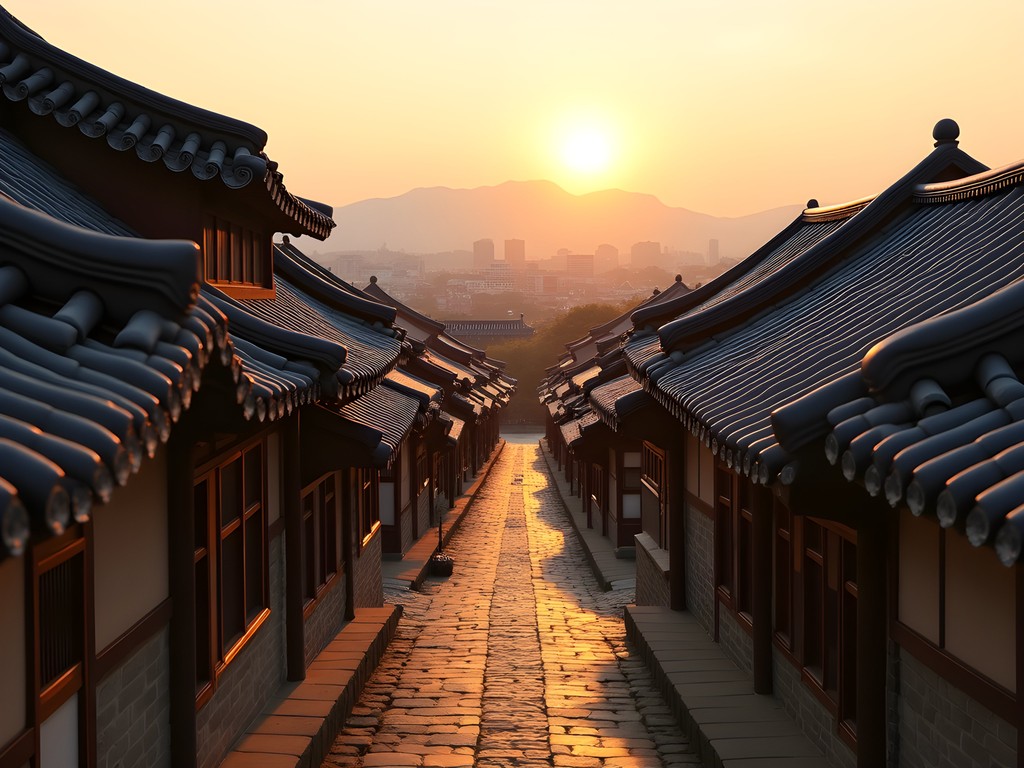
💡 Pro Tips
- Visit Bukchon before 10am to avoid the crowds and get photos without tourists in the background
- Many hanok in Bukchon are private residences - respect signs asking for privacy and keep noise levels down
- Book a traditional tea ceremony experience at Bukchon Traditional Culture Center to learn about Korean tea culture
The Science Behind Seoul's Palaces: Engineering Marvels of the Joseon Dynasty
While most visitors to Seoul's five grand palaces focus on the historical significance or aesthetic beauty, my science background had me obsessing over something else entirely: the remarkable engineering achievements these structures represent.
Gyeongbokgung Palace, the largest and most magnificent, was originally built in 1395. Walking through its grounds, I was struck by the sophisticated understanding of acoustics demonstrated in the design of Geunjeongjeon Hall, the main throne hall. The high ceilings and specific dimensions create a natural amplification effect that would have allowed the king's voice to carry across the courtyard—a medieval microphone system, if you will.
At Changdeokgung Palace (my personal favorite and a UNESCO World Heritage site), the Secret Garden showcases principles of sustainable landscape design that predate our modern environmental movement by centuries. The garden uses natural topography to create microclimates, employs strategic tree placement for shade management, and features a gravity-fed water system that connects a series of ponds without mechanical pumps.
I spent an entire afternoon photographing these engineering marvels with my travel camera, which handled the challenging lighting conditions beautifully as the sun moved across the ornate structures. The 24.2 megapixel sensor captured details in the intricate wooden joinery that my eyes initially missed—mortise and tenon connections that have withstood earthquakes and invasions for hundreds of years without a single nail.
Changgyeonggung Palace offered another fascinating scientific connection—it houses Daeonsil, a Victorian-style glasshouse built in 1909 that represents Korea's first Western-style botanical research facility. Standing inside its restored frame, I couldn't help but think about how this structure symbolizes the beginning of Korea's scientific modernization that would eventually lead to the technological powerhouse it is today.

💡 Pro Tips
- Purchase the Integrated Palace Ticket (₩10,000) for access to all four main palaces and Jongmyo Shrine—it's valid for three months
- Time your visit to Gyeongbokgung to catch the changing of the guard ceremony (10am, 2pm daily except Tuesdays)
- Download the Palace Guide app which offers detailed scientific and architectural information not covered in standard tours
From Temple Stays to Kimchi Science: Immersive Cultural Experiences
If you really want to understand Korean culture beyond the surface level, you need to get your hands dirty—sometimes literally. My most memorable experiences in Seoul came from immersive workshops that connected traditional practices with their scientific underpinnings.
At the Korean Cultural Center near Gyeongbokgung, I joined a kimchi-making workshop that was equal parts culinary instruction and microbiology lesson. Our instructor, Ms. Park, explained the fermentation process that gives kimchi its distinctive flavor and probiotic benefits. As we massaged salt into napa cabbage and mixed gochugaru (Korean red pepper flakes) into the paste, she detailed how different regional variations developed based on local climate conditions—coastal areas using more seafood, mountainous regions relying on different vegetables. I left with my own jar of kimchi to ferment and a much deeper appreciation for this staple of Korean cuisine.
For a spiritual dimension, I spent 24 hours at Geumsunsa Temple on the slopes of Bukhansan Mountain, just outside the city center. The temple stay program includes meditation, ceremonial meals, tea ceremonies, and the pre-dawn yebul (Buddhist chanting ritual). What fascinated me most was the temple's architectural harmony with its environment—positioned to maximize natural light while providing protection from harsh weather, using natural ventilation principles that modern sustainable architects still employ today.
For a more modern immersion, I booked a K-pop dance class at MDance Academy in Gangnam, where a patient instructor taught our group of uncoordinated foreigners the basic moves to BTS's 'Dynamite.' Beyond being hilariously fun, it gave me insight into the precision and athleticism behind K-pop's seemingly effortless choreography. I tracked my heart rate during the session, and it was equivalent to a moderate cardio workout—these idols are serious athletes!
To document these experiences, I relied on my smartphone gimbal which allowed me to capture smooth video even while participating in activities. The compact design meant I could always have it with me without adding significant weight to my daypack.

💡 Pro Tips
- Book temple stays at least one week in advance through templestay.com (English available)
- Bring comfortable clothes you can move in for dance classes, and don't worry about skill level—they're used to beginners
- Many cultural workshops offer discounts for advance online booking, so check official websites before showing up
Seoul After Dark: From Night Markets to Neon-Lit Entertainment Districts
Seoul truly comes alive after sunset, transforming into a neon wonderland that offers cultural experiences impossible to find during daylight hours.
My first night-time adventure took me to Gwangjang Market, one of Seoul's oldest traditional markets that transforms into a bustling food paradise after dark. Pushing past the initial sensory overload, I found a seat at a crowded stall where an elderly woman had been making bindaetteok (mung bean pancakes) for over 40 years. The scientific precision of her movements—the exact amount of batter, the perfect temperature of the oil, the precise moment to flip—demonstrated the kind of mastery that comes only from decades of repetition.
For a completely different nocturnal experience, I ventured to Hongdae, the university district that serves as Seoul's creative heart. Here, street performers showcase everything from K-pop dance covers to traditional samulnori drumming with modern twists. What struck me was how public space becomes a democratic platform for artistic expression—no tickets required, just spontaneous cultural exchange between performers and audiences.
In Itaewon, Seoul's international district, I discovered a thriving comedy scene at the Seoul Comedy Club, where bilingual comedians perform in both Korean and English. The cultural commentary provided insights into Korean society that no guidebook could offer, particularly around generational differences and rapid technological change.
Perhaps my most quintessentially Seoul experience came in Gangnam (yes, that Gangnam), where I spent an evening in a noraebang (Korean karaoke room). Unlike Western karaoke bars where you perform for strangers, noraebangs are private rooms rented by the hour. The technological setup was impressive—touchscreen song selection in multiple languages, sophisticated sound systems with adjustable reverb to make even my terrible singing sound passable, and lighting effects that would make a concert designer jealous.
Navigating Seoul's nightlife required some planning, especially regarding transportation back to my accommodation. The subway stops running around midnight, so I made sure to download the translation app to help communicate with taxi drivers when needed. Unlike Google Translate, Papago is specifically optimized for Korean-English translation and even works offline, which proved invaluable when my data connection was spotty in crowded areas.
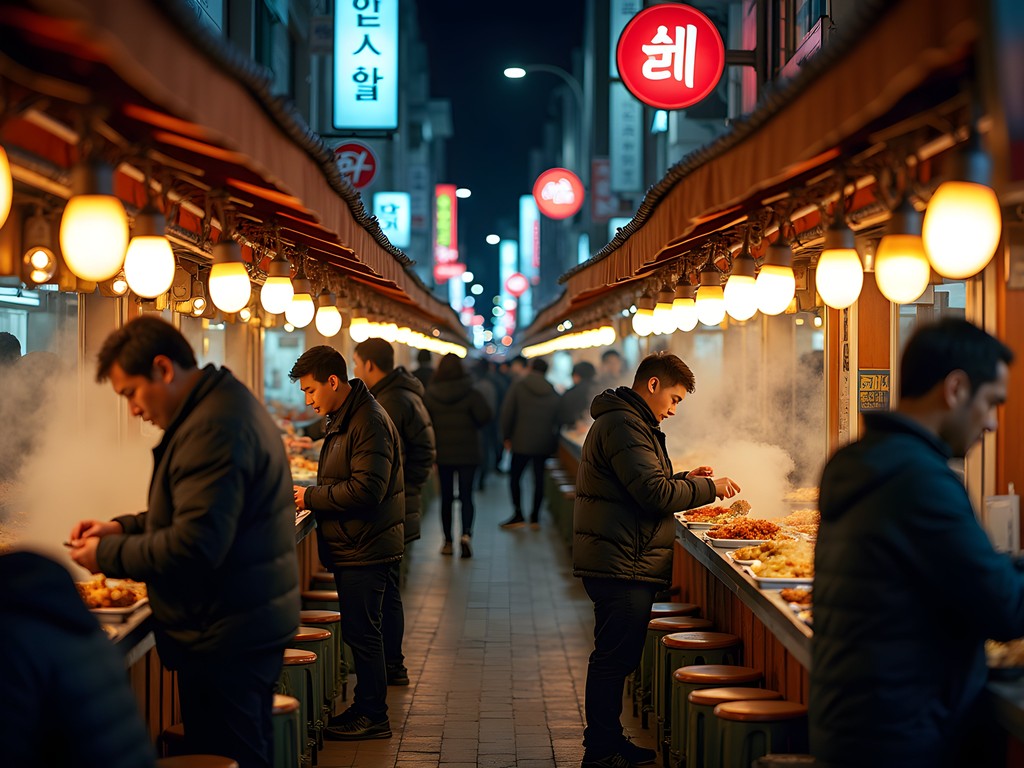
💡 Pro Tips
- Most night markets and food streets are busiest from 7-10pm; go slightly earlier (6pm) to avoid the worst crowds
- The Seoul Subway runs until approximately midnight, so check last train times if you're staying out late
- In noraebangs, you pay for the room not per song—so gather a group to make it more economical
K-Pop Culture: Beyond the Music to a Global Phenomenon
Even if you're not a dedicated K-pop fan (I wasn't before this trip), understanding this cultural juggernaut provides valuable insight into contemporary Korean society and its growing global influence.
My education began at HYBE Insight, the museum dedicated to BTS and other artists under the HYBE label. Rather than just showcasing memorabilia, the museum uses interactive technology to explain the production process behind K-pop. As someone who communicates science for a living, I was impressed by how the exhibits break down complex concepts like sound engineering and music production into engaging, accessible experiences.
The most fascinating aspect was learning about the systematic training system that produces K-pop idols—a process that combines elements of athletic training, performing arts education, and media training. It's essentially a scientific approach to creating entertainers, with agencies applying principles of deliberate practice and skill acquisition that cognitive scientists have studied for decades.
For a more hands-on experience, I visited the SM Entertainment COEX Artium, where visitors can record themselves in a professional booth singing K-pop hits or film themselves in a mini music video setting. The technology behind these experiences—from the automated mixing software to the augmented reality elements—showcases Korea's technological prowess applied to entertainment.
Even if you're skeptical about manufactured pop music (as I admittedly was), it's hard not to appreciate the precision and intention behind every element of K-pop production. From the color theory applied to music video aesthetics to the mathematical patterns in choreography, there's a scientific methodology that underpins the artistry.
What I found most compelling was how K-pop serves as a gateway to broader Korean cultural appreciation. Many international fans I met at these attractions had initially discovered Korea through music videos but had gone on to learn the language, study Korean history, and develop appreciation for traditional culture as well. It's cultural diplomacy through catchy hooks and synchronized dance moves—and it's remarkably effective.

💡 Pro Tips
- Book HYBE Insight tickets online in advance as they frequently sell out, especially on weekends
- Visit K-Star Road in Gangnam to see the 'gangnamdol' figurines representing different K-pop groups
- Check university bulletin boards in Hongdae for announcements of K-pop flash mobs or public dance practices
Final Thoughts
As my week in Seoul came to a close, I found myself sitting at a café in Ikseon-dong—a 100-year-old hanok now serving artisanal pour-over coffee. This final moment perfectly encapsulated what makes Seoul so magnetic: its ability to honor tradition while fearlessly embracing innovation. The city doesn't present its cultural identity as a museum piece frozen in time, nor does it abandon its heritage in pursuit of modernity. Instead, it creates a continuous conversation between past and present, traditional and contemporary.
For visitors willing to engage with both aspects of Seoul's cultural spectrum—from the contemplative spaces of ancient palaces to the sensory overload of K-pop performances—the reward is a nuanced understanding of a society that has transformed itself while maintaining its core identity. As both a science communicator and cultural explorer, I can't think of a more fascinating case study in how a society navigates rapid change while preserving its essential character. Seoul doesn't just display its culture—it invites you to participate in its ongoing evolution.
✨ Key Takeaways
- Seoul excels at preserving traditional culture within a hyper-modern context
- The most rewarding experiences come from participatory cultural activities like workshops and classes
- Understanding both historical and contemporary Korean culture provides deeper appreciation of the country's global influence
📋 Practical Information
Best Time to Visit
September-November (fall) for comfortable temperatures and autumn foliage
Budget Estimate
$100-150 per day including mid-range accommodation, meals, and activities
Recommended Duration
Minimum 5 days, ideally 7-10 days for deeper cultural exploration
Difficulty Level
Intermediate

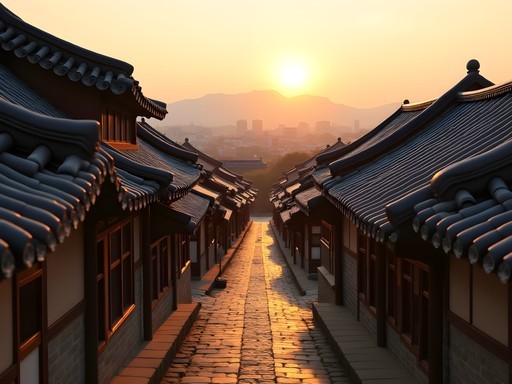
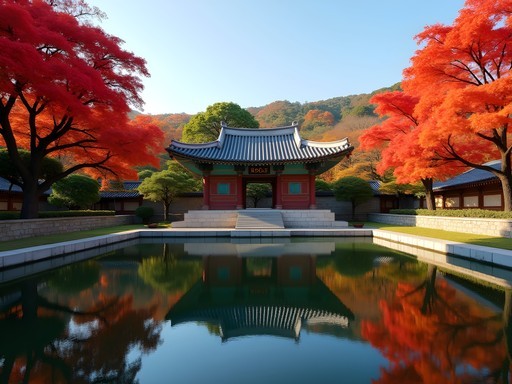

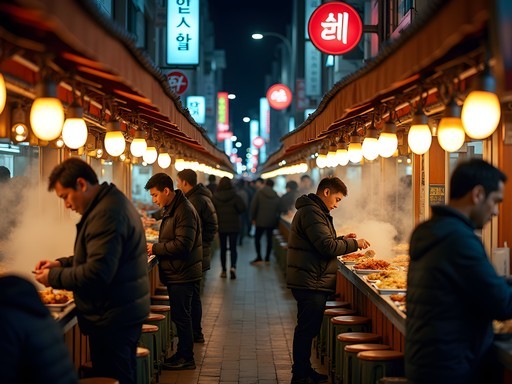




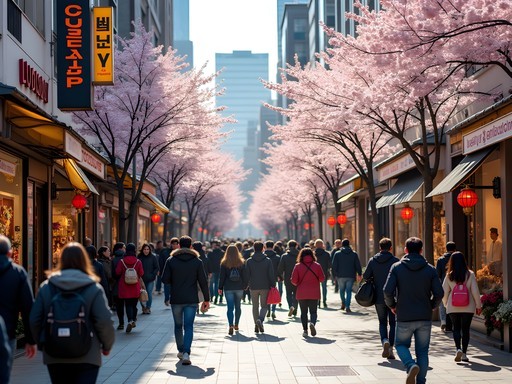
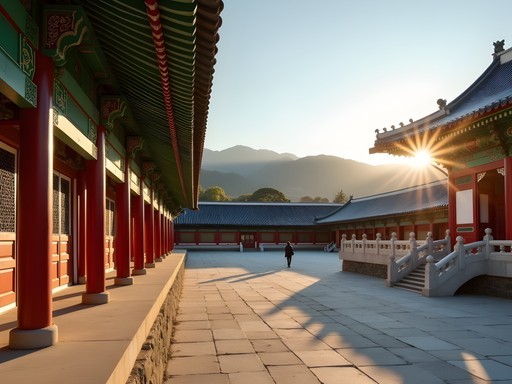
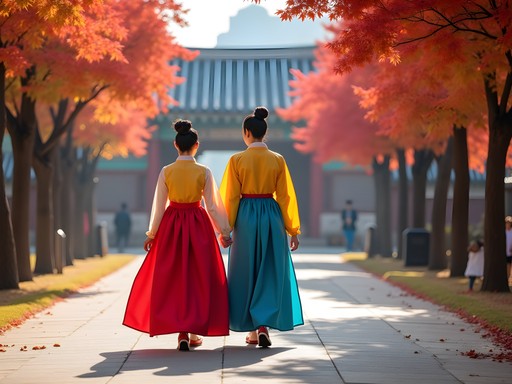
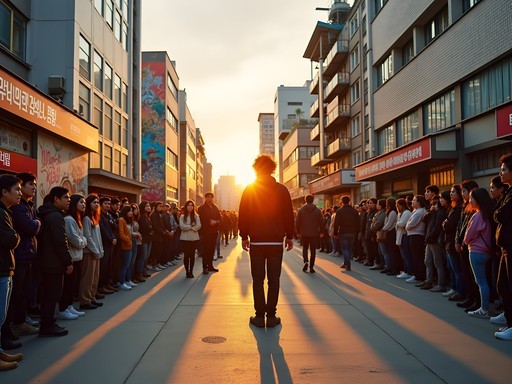
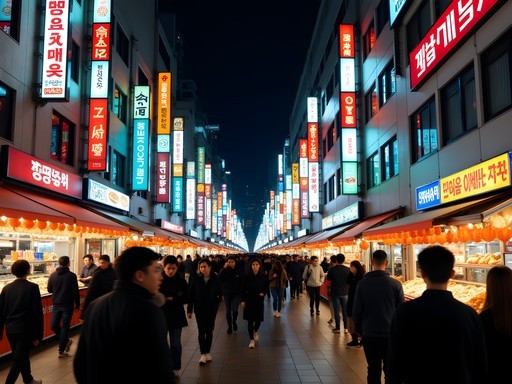


Comments
springlife
I'm going to Seoul next month and this post has me so excited! The contrast between traditional villages and modern K-pop culture sounds fascinating. Did you need to book the temple experiences in advance? Also, any tips for navigating the subway system?
Caleb Daniels
Definitely book temple stays at least 2 weeks ahead - they fill up fast! For the subway, download Naver Map app - it's better than Google Maps in Korea and shows exact exit numbers (super important in those massive stations).
springlife
Thanks for the app recommendation! Will download it before my trip.
Savannah Wood
Just to add to Caleb's advice - get a T-money card right away at the airport! You can use it for subway, buses and even some convenience stores. Saved me so much time not buying individual tickets.
Savannah Wood
This post brings back so many memories! I stayed in a hanok guesthouse in Bukchon last year and it was such a unique experience - sleeping on the heated floor (ondol) was surprisingly comfortable. The contrast between ancient traditions and K-pop culture is what makes Seoul so special. I actually did a temple stay at Jogyesa Temple and it was incredibly grounding amid the city chaos. The 4am meditation was brutal but transformative! Did you try any particular temple programs during your visit, Caleb?
Caleb Daniels
I did a half-day program at Bongeunsa Temple that included meditation and tea ceremony. Not as immersive as your overnight stay sounds, but still a peaceful break from the city energy. The monk who led our meditation had been practicing for 40 years!
Savannah Wood
That tea ceremony sounds amazing! I found carrying my travel journal really helpful during these experiences - writing down the monk's teachings right after helped me process everything.
photoqueen4600
Your photos of Bukchon Hanok Village are stunning! Did you find it crowded with tourists? I'm planning a trip in August and wondering if early morning is better for photos.
Caleb Daniels
Thanks! Definitely go early morning (before 9am) if you want fewer tourists in your shots. The light is beautiful then too. By 10am, tour groups start flooding in.
photoqueen4600
Perfect, thanks for the tip! Can't wait to capture those curved rooftops in the morning light.
wandernomad
That shot of sunset over the hanok rooftops with the skyscrapers in the background is absolutely stunning! Perfectly captures the whole vibe of the article.
Sarah Powell
Just returned from my third Seoul trip and this post captures the essence perfectly. For anyone interested in the cultural contrasts mentioned, I recommend spending at least 5 days. The temple stay at Jogyesa was transformative - waking at 4am for meditation sounds tough but it was deeply peaceful. For transportation, I used my transit card which works on subways, buses and even taxis. One observation: the hanok villages get extremely crowded midday. Visit before 9am for a more authentic experience. The morning light on those curved rooftops is worth the early wake-up!
sunsetmate
The kimchi-making class looks so fun! Did you bring any recipes back?
redexplorer
I'm planning a trip to Seoul in October. How easy is it to navigate between these traditional areas and the modern districts? Is public transportation reliable? Trying to plan my itinerary and not sure how much time to allow for getting around.
Sarah Powell
Seoul's subway system is honestly one of the best in the world! Super clean, efficient, and all signs are in English. Download Naver Maps app instead of Google Maps - much more accurate for Korea. Most hanok villages are within walking distance of subway stations. You can easily do 3-4 major sites in one day.
redexplorer
Thanks Sarah! That's really helpful. Will definitely download that app.
Casey Andersson
Caleb, your post perfectly captures the beautiful duality of Seoul! I stayed at a luxury hanok hotel in Bukchon last month and it was worth every penny. The experience of sleeping on a heated floor in a 400-year-old building while having all modern amenities was surreal. Pro tip for anyone heading there: book a private hanbok photoshoot at sunrise in Gyeongbokgung Palace grounds. The lighting is magical and you'll avoid the crowds. Also, don't miss Ikseon-dong's hidden cocktail bars - there's one behind a bookshelf that serves drinks inspired by Korean folklore!
wandernomad
That bookshelf bar sounds amazing! Do you remember the name?
Casey Andersson
It's called 'Moonlit Tales' - quite hidden but worth finding! Look for the blue door with a crescent moon handle.
moonhero
Those hanok photos are stunning! Adding this to my bucket list right now!
wandernomad
This post is giving me serious travel envy! I visited Seoul last year but totally missed Bukchon Hanok Village 😭 The contrast between traditional and modern Seoul is what makes it so fascinating. Did anyone else feel like they were time traveling there? The temples were so peaceful in the morning and then boom—you're in the middle of neon lights and K-pop by evening!
redexplorer
Yes! That contrast is what makes Seoul so special. One minute you're in a 600-year-old palace and the next you're watching K-pop dance crews in Hongdae. Magic!
wandernomad
Exactly! Did you try a temple stay? That was on my list but ran out of time.
Venture X
Premium card with 2X miles, $300 travel credit, Priority Pass